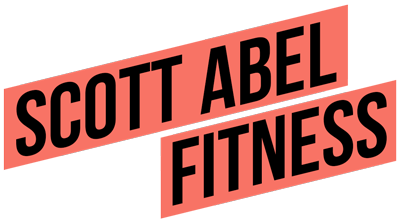One thing about the new normal is that everyone is learning the importance of adaptability and flexibility in many different areas of life.
The fitness industry is no exception. Some gyms have opened with rules so strict that people choose to stay home. In some places, gyms have opened but it looks like they will have to close yet again. And who knows how long this back and forth may go on?
In the meantime, many people have adapted well to home gym training, so much so that this is their chosen new normal, and it just took a calamity of this sort to bring the opportunity into their consideration so they could see it more clearly.
On the employment front, many people are adapting to working at home. Some find they have way more time on their hands, while others, because of this new normal, they are working longer hours more regularly.
Many people have to rethink their fitness regimens – and some trainees are having to be very creative. I’m going to give you an example below, but the point of this whole article is that there are always options. I’m surprised by how many people feel they have no options.
* * *
So, when trying to solve a workout/training dilemma, first and foremost the answer is to always look for the simplest approach. It usually takes an expert to learn to do this, as most people have it imprinted upon them to make solutions complicated; or they assume an all or nothing approach – like, “I can’t do my program so might as well not do anything.” I’ve seen a lot of this sort of mindset with the lockdown and new normal.
Next – if you have a training regimen dilemma, you have to be willing to compromise your approach. For instance; if you lack both, time for working out on a day to day basis – and – you lack equipment, then you aren’t going to have the most perfect workout routine ever designed.
So a common mistake people make here is they often think there are ways around this.
They think they are going to get the same results they would get with longer workouts in a fully equipped facility. But the level of compromise will dictate the reality of what the level of progress is going to be.
In other words, less than optimum conditions for training, mean less than optimum certainties for progress.
Still, most fitness/workout dilemmas are solvable in some way or another. It’s just that it often requires a shift in thinking and in expectations.
Here is one such dilemma:
I have a client who is smacked down with regular long and extra hours at his job, with no relief in sight. He is fortunate enough to be in one of the jobs where the virus has inadvertently created more demand for his work, not less.
But, because of this extra demand on his time, he only has 20 to 30 minutes per day for exercise, but he can, and wants to do something workout-wise, 5 days per week. He wants to maintain his physique of course and look as muscular as possible, and retain some level of established fitness as he works through this dilemma of limited time and equipment.
For equipment he has resistance bands and a set of 10-50 lb adjustable dumbbells, but he does NOT have a bench.
So, this client’s training dilemma is 1) a lack of time, and 2) a lack of equipment, as not having an adjustable bench is really limiting options for exercise selection.
He has to compromise.
This isn't uncommon. Many trainees are experiencing a level of frustration trying to purchase home-gym equipment as many home gym fitness supplies are on an extended back-order.
The Training Solution
(You can jump to the actual workout chart below if you want to see the workouts, but then come back and read the rationale behind them)
From the onset, let me say that each particular training dilemma is usually highly individualized. And in order to solve anyone’s particular training dilemma, you have to assess their current level of conditioning. And then, you have to integrate their goals into the solution, in a reasonable manner.
So, although most training dilemmas are solvable, they are just as often highly individual as well.
For this particular training dilemma I would first look at the limited time per session for working out. The solution here is doing one biplex exercise per workout, and only one.
Then we need to address exercise selection because there are limitations here as well.
We will do one exercise in the biplex with DB’s, and the other exercise with bands – or we can do both exercises with either bands or DB’s or have an option to mix and match, as you see in the chart below.
This serves the mental stimulation of “keeping a program alive” so it doesn’t get stale.
Now, within the time-crunch workouts themselves – since the instruction and structure is only one single biplex per workout, then the goal would be to get in as many sets of this one biplex as possible within that 20-30 minutes session (without rushing rest times between sets).
In between sets I would suggest GPP for the part of the body not being worked. So, if doing an upper body biplex, then active rest between sets would be GPP for lower body and vice versa.
He could also just do some basic stretches as active rest between sets, as well.
This setup gives him a general workout structure as a starting point.
Then we have to decide on strategy. No program of mine for a client is just going to slap together exercises, no matter what the training dilemma is.
For this particular workout solution, I came up with a rotational approach of basic muscle antagonist biplexes. So the instructions are to create biplexes of chest/back – biceps/triceps – legs/shoulders. Then, the next time through the rotation he just reverses the order of the first exercise and goes to back/chest, biceps/triceps, shoulders/legs.
Because he has 5 days to workout, and because we stretch the 3 days rotation over the 5 days, he has plenty of time for his muscles to recover.
So here, he is doing one and only one targeted muscle biplex (superset) per workout. And then to keep to Innervation Training Principles as close as possible, he just changes the exercise selection each workout as well – to capitalize as much as he can on muscle recruitment via altering ranges and planes of motion with exercise selection.
Depending on the degree of difficulty of exercises selected and workout intensity applied, he could reasonably perform 10 –15 working sets for the limited time he has available.
For reps ranges, he has a limited range of DBs, only to 50 lbs, so heavy low reps exercises are eliminated as a viable option. But this isn’t a bad thing at all, because research shows that strength can certainly be maintained for a long-time with high reps stimulation. And not only that, but there is more favorable conditioning and cosmetic physique advantage to higher reps training when options are limited, and we decide to focus on biplexes
So the bottom line here is that we keep the reps ranges in the double digits – 10 to 20 reps per exercise, aiming for targeted muscle stimulation but training short of failure of course.
It is also recommended for anyone training at home with limited equipment to look for other things around the house that could be used for workouts. For example, below we can just use a chair for elevation for changing angles, like for feet elevated push ups, or for a trailing leg for Bulgarian Split Squats and the like.
For another example of this, I refer you to the conditioning home workout, I created on the spot with Jess, which you can view here:
I will give you examples in the chart below:
Workout 1: Chest / Back
Workout 2: Biceps / Triceps
Workout 3: Legs / Shoulders
Workout 4: Back / Chest
Workout 5: Triceps / Biceps
Workout 6: Shoulders / Legs
* for Bulgarian Split Squats do only leg per biplex – so, set one Right Leg, then back to next set for shoulder exercise, then biplex with Left Leg etc – just make sure to finish the workout with equal sets per leg
** Same idea as in the asterisk above: Do only side for shoulder press and one side leg for step ups into reverse lunge per set – so first biplex would be left shoulder for shoulder press biplexed with left leg step up into reverse lunge, then rest – then next set repeat for right shoulder and right leg, back and forth
For any exercise demos for the resistance bands exercises, check out my Resistance Bands playlist on Youtube.)
The chart shows you two rotations through the structured protocol over a 4 week cycle. So, when that is repeated 4 X’s through he has a 16 weeks structured protocol to work within, which is far superior than just making up workouts when pressed for time.
So here you have a specific workout solution to a specific training two-fold training dilemma 1) time constraints, 2) current lack of equipment. But this solution is also founded upon and keeping in mind the client’s current fitness level and his general overall goal.
Not everyone has the same goals of course (nor the same dilemmas to solve)
For instance, in past articles and especially in my “Program Design Masterclass” I have also discussed other approaches to training dilemmas. For example, in terms of lack of equipment, we have discussed various BW bodypart blasts, several of which are also on my YT channel. The simple and very popular Bodyweight Quadblast is a high intensity example, of a “no equipment, no problem” workout solution.
In terms of time-crunch solutions for someone who is more concerned with ‘conditioning’ than with overall muscle development and stimulation, there is my three various levels of the Dumbbell Matrix, which is also, extremely popular even all these years later.
Most training dilemmas of the new normal are solvable. But you may have to also adjust expectations as well – limitations are limitations after all.
In the next article I will illustrate for you another training dilemma that was solved by keeping it simple – and how a background in program design is essential to solving training dilemmas. The people who tend to get stuck when it comes to solving training dilemmas, tend to be the people who focus more on workouts than they do on program design, and unfortunately, this includes many experts.
Hope the above gives you ideas for solving your own workout/fitness dilemmas.

